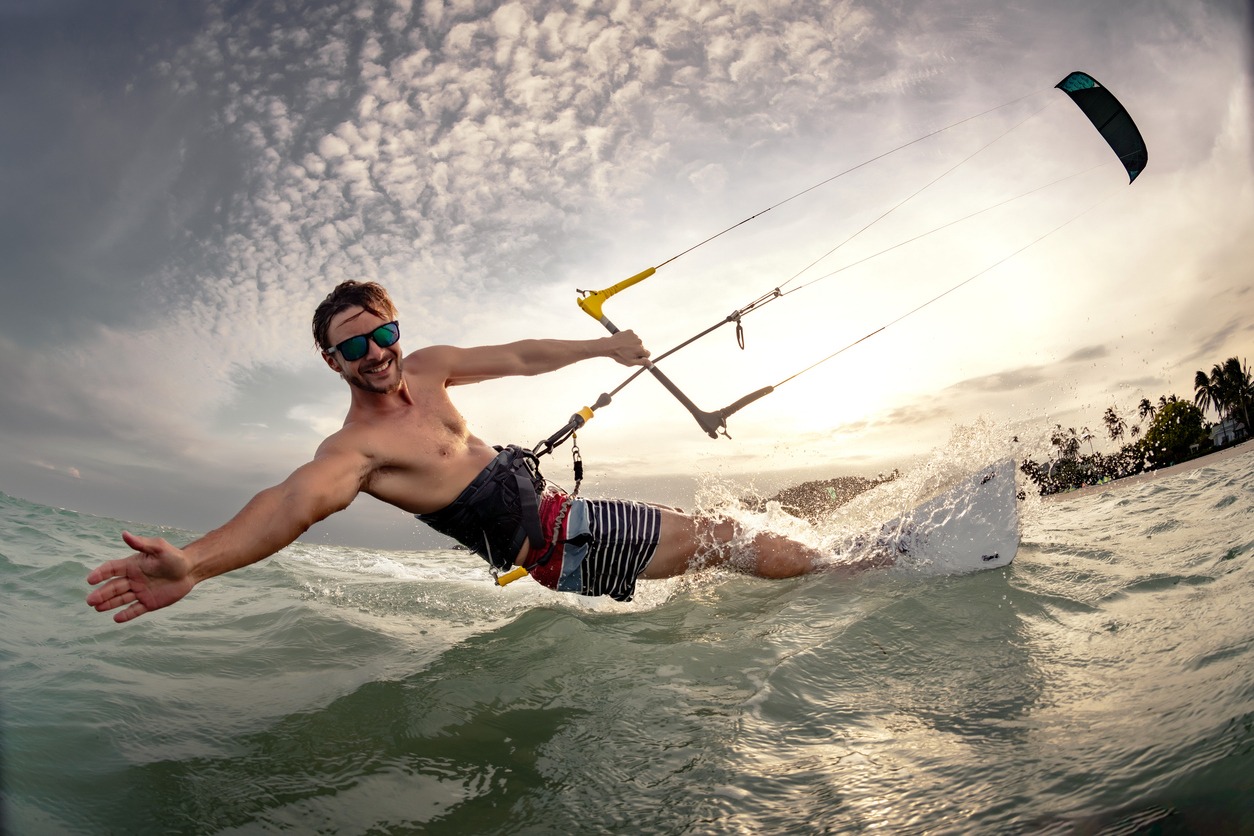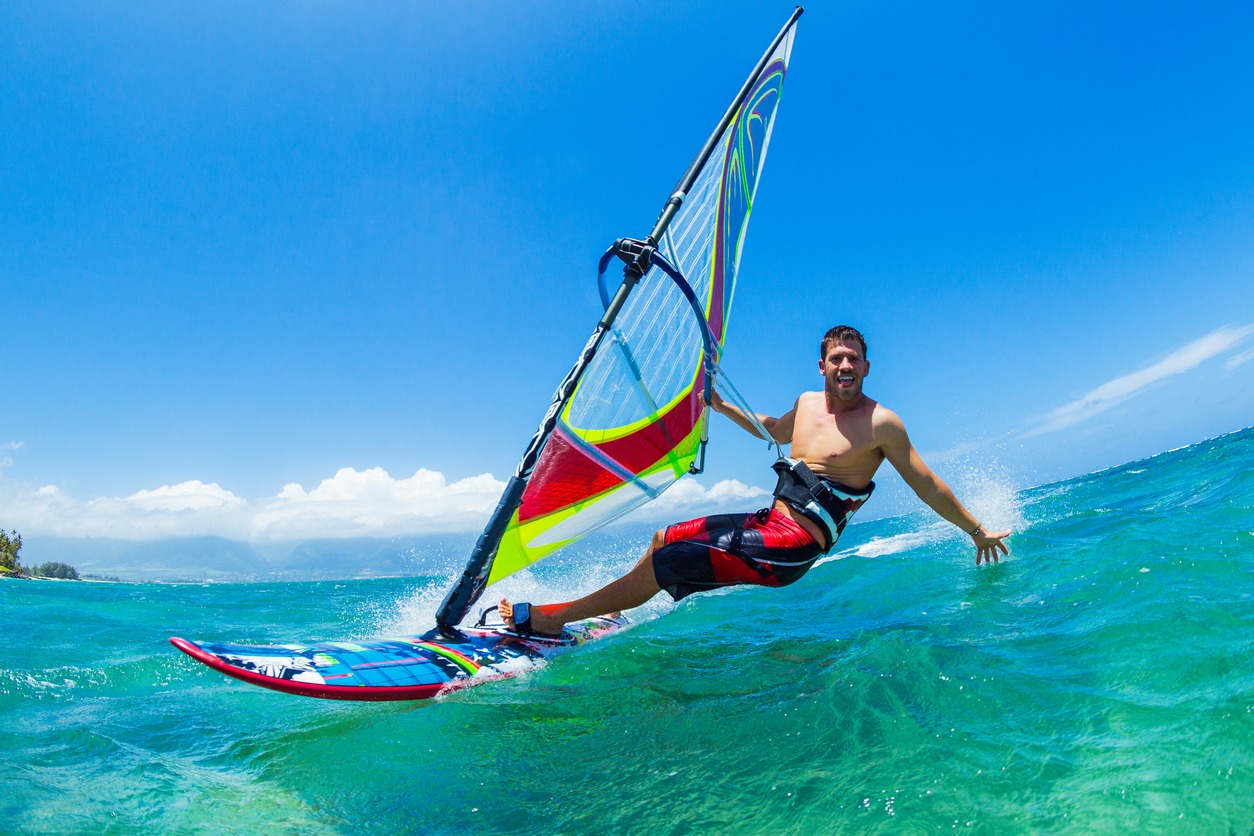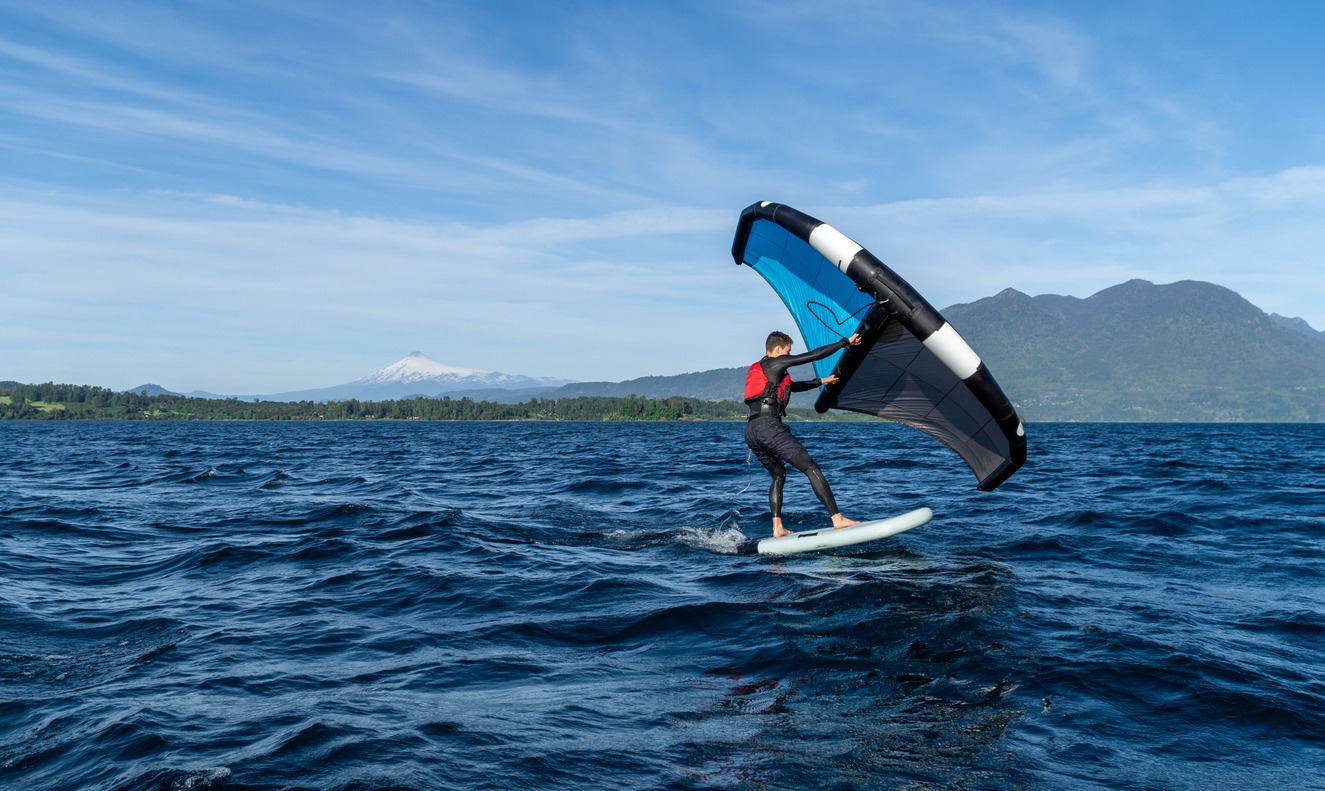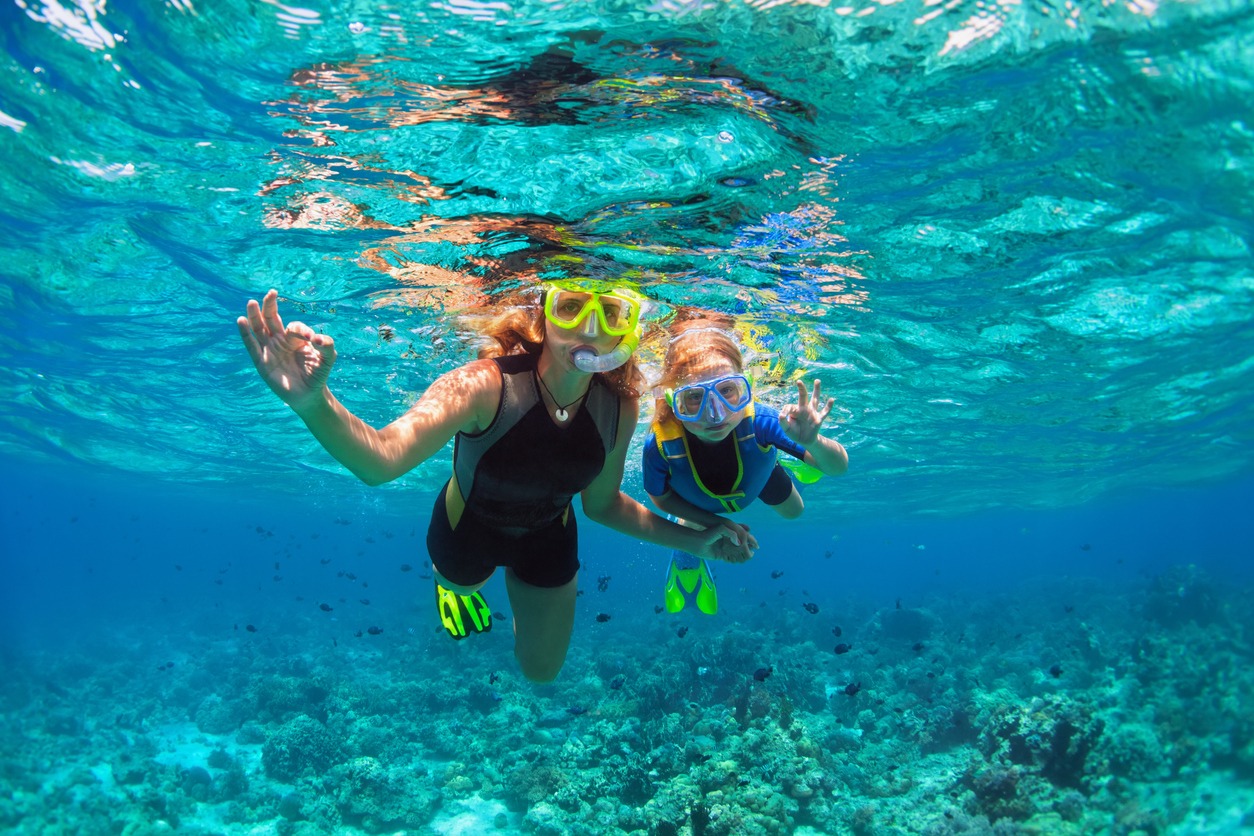Complete Guide to Kneeboarding: Tips for Beginners
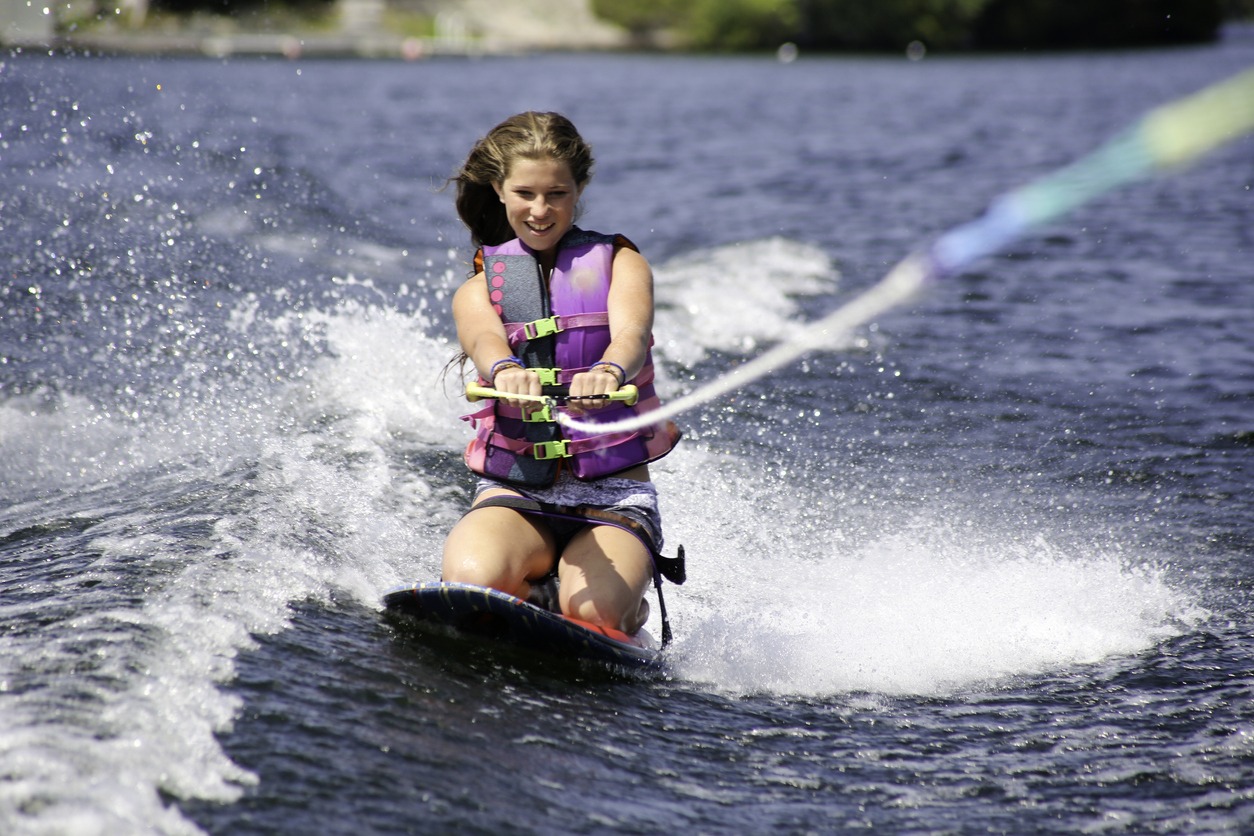
Kneeboarding is an exciting water sport that's perfect for beginners. You'll ride on your knees atop a small board while being towed behind a boat. To get started, you'll need a Coast Guard-approved life jacket, a kneeboard, and a tow rope. Choose a board based on your weight and skill level. Begin by lying face-down on the board, then shift to a kneeling position. Grip the handle firmly and lean back slightly to stabilize. Start at slower speeds and practice steering by shifting your weight. Always prioritize safety and follow proper techniques. As you gain confidence, you'll uncover a world of thrilling maneuvers and tricks awaiting you.
What Is Kneeboarding?
While many water sports enthusiasts are familiar with water skiing and wakeboarding, kneeboarding offers a unique and exciting alternative. This water sport involves riders sitting on their knees atop a small board while being towed behind a boat. It's an excellent option for beginners, as it provides a lower center of gravity and increased stability compared to other towed water sports.
Kneeboarding emerged as a popular recreational activity in the 1970s and has since gained a dedicated following. It offers a full-body workout and provides riders with a distinctive viewpoint close to the water's surface. The sport's appeal lies in its accessibility for newcomers and the thrill it delivers to experienced riders alike.
To get started with kneeboarding, you'll need some necessary equipment. This includes a kneeboard, designed with specific features like rocker, fins, and edges to enhance performance and stability. A life jacket is essential for safety, as is a proper tow rope. With the right gear and techniques, you'll be able to experience the excitement of kneeboarding while enjoying a unique association with the water.
Essential Kneeboarding Equipment
Now that you understand what kneeboarding is, let's focus on the gear you'll need to get started. The most essential piece of equipment is a Coast Guard-approved life jacket that fits you properly. This isn't just a safety precaution; it's a necessity for your protection on the water.
Next, you'll need a kneeboard suited to your size and skill level. Choose one that offers stability and control, allowing you to maneuver comfortably while being towed behind the boat. Recreational kneeboards are rotationally molded for stability, floatation, and control, while competitive kneeboards are compression molded for greater performance and durability. A tow rope specifically designed for kneeboarding is imperative, featuring a comfortable grip to help you maintain control throughout your ride. Non-stretch rope made from Spectra is ideal for tricks with low elasticity and moisture absorption, while low-stretch rope made from polyethylene or blends provides more elasticity for recreational use.
Don't forget about the boat and its driver. The boat's power and the driver's experience are indispensable in providing the appropriate towing speed for your skill level. As you progress, you may want to invest in protective gear like gloves and wetsuits to enhance your kneeboarding experience and prevent injuries.
Choosing the Right Kneeboard
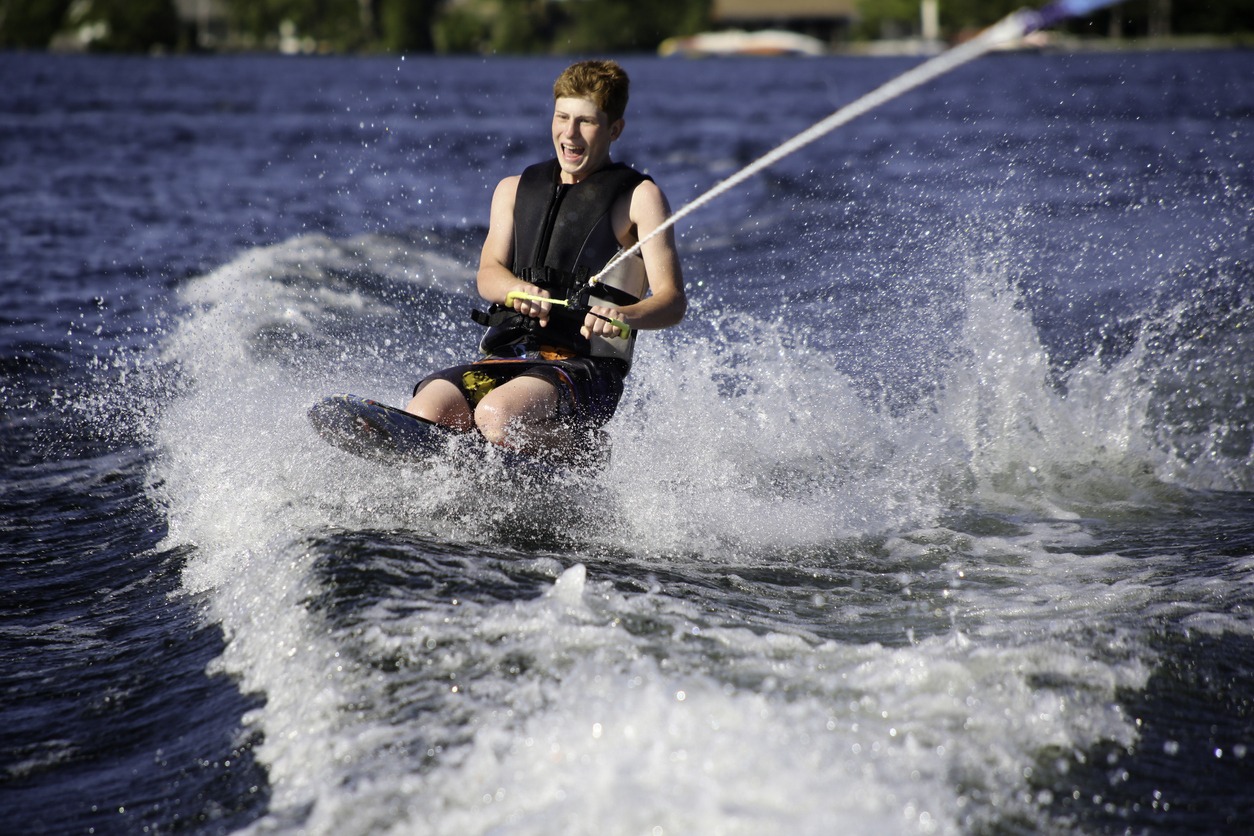
Selecting the right kneeboard is essential for your safety, comfort, and progression in the sport. When choosing a kneeboard, consider your size, weight, skill level, and intended use. Recreational boards are ideal for beginners and casual riders, offering stability and ease of use. They feature wide, beveled edges and thick foam cores, making them forgiving at lower boat speeds. Competitive boards, on the other hand, are designed for kneeboarding enthusiasts who want to perform tricks and carve aggressively. Guaranteeing proper board fit is key, as it can impact your stability and control on the water.
To find the right kneeboard for you, keep these factors in mind:
- Size: Choose a board length based on your weight, with smaller boards (50-54 inches) for riders under 150 lbs and larger boards (67+ inches) for those over 210 lbs.
- Style: Decide between recreational or competitive boards based on your skill level and goals.
- Performance: Consider how you'll use the board – for casual riding or advanced tricks.
- Fit: Guarantee the kneeboard strap is comfortable and secure.
Getting Started on a Kneeboard
Getting started on a kneeboard involves four key steps to guarantee a safe and enjoyable experience. First, position yourself face-down on the board, using your arms to support your upper body near the front. Next, move to a seated position by carefully tucking your knees onto the board while maintaining a firm grip on the tow handle.
As the boat begins to move, adjust your body weight to stabilize the kneeboard. Lean back slightly with straight arms to maintain balance. Always make certain you're securely strapped over your thighs before takeoff. Once you're up and moving, experiment with steering by shifting your weight. Leaning to the left or right will help you turn and maneuver on the water.
Holding onto the tow handle, gradually increase your speed and skill level as you become more comfortable. Remember to communicate with the boat driver using clear hand signals to indicate when you want to start, stop, or adjust speed. This guarantees a safe and successful kneeboarding experience. As you progress, you'll be able to attempt more advanced techniques and tricks on the water.
Basic Kneeboarding Techniques
Once you've conquered getting up on the kneeboard, it's time to focus on basic techniques that'll improve your ride. Proper body positioning is critical for maintaining balance and control. Start by lying flat, then transition to a seated kneeling position with your arms straight and lean back slightly. This posture will help you navigate through turns and arcs more effectively.
To steer and perform tricks, you'll need to shift your weight and apply pressure to the board's edges. As you gain confidence, you can start experimenting with sharper edges to make tighter turns. Remember, there are two types of kneeboarding: recreational and competitive. While you're learning, focus on mastering the fundamentals before attempting advanced maneuvers.
Start at slower speeds (10-15 mph) and gradually increase, wear a life jacket and prioritize safety, communicate clearly with your boat driver, and be aware of your surroundings at all times.
As you progress, you can try riding without a tow strap, which can help you transition to the seated position more easily. Keep going, practice regularly, and you'll soon be ready to explore more advanced tips and tricks in this exciting water sport.
Safety Precautions for Kneeboarding
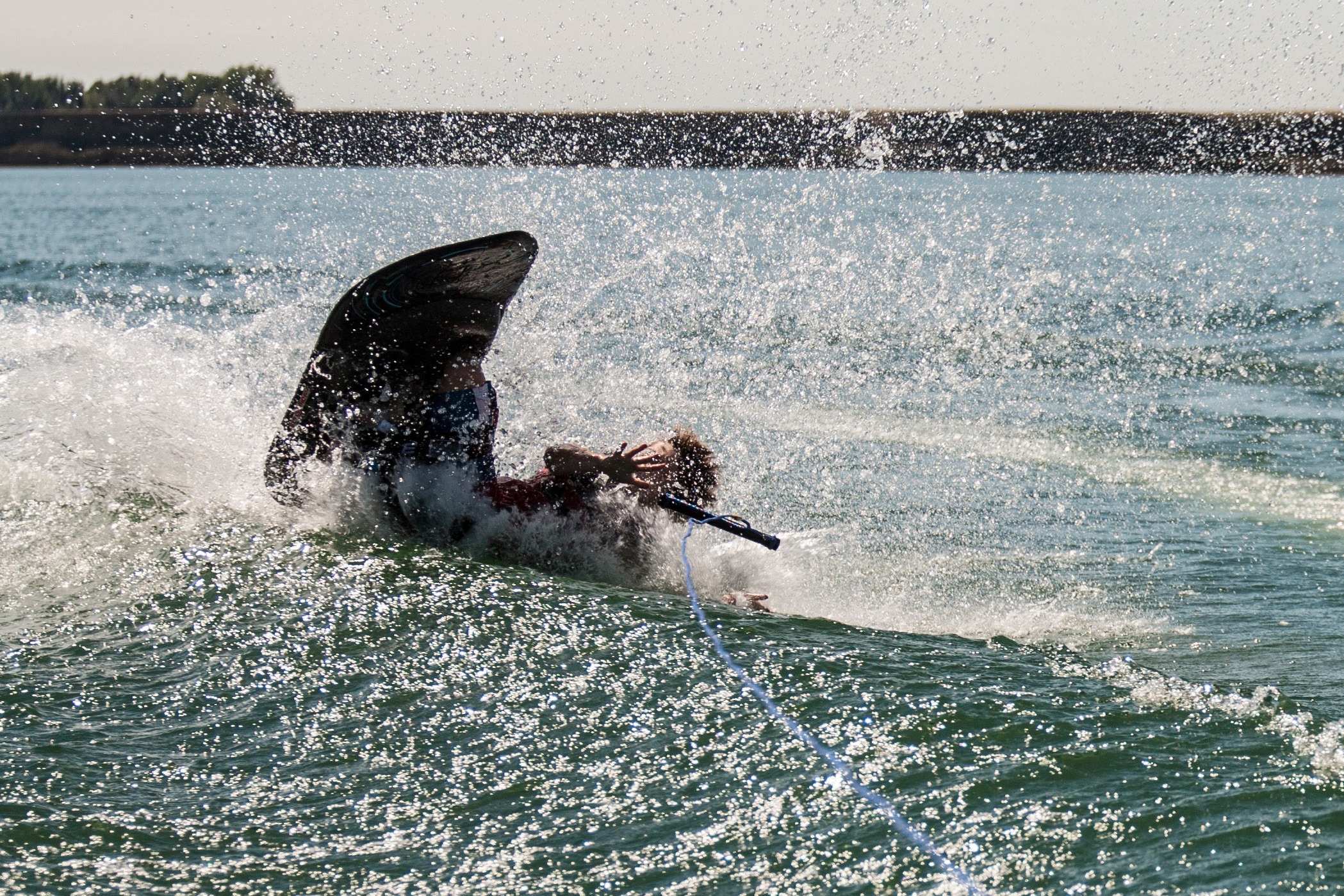
Safety should be your top priority when kneeboarding. Always wear a properly fitted Coast Guard-approved life jacket before hitting the water. It's vital to maintain a safe distance from other boats, swimmers, and objects in the water to prevent accidents and injuries.
Establish clear signals with your boat driver to communicate when to start, stop, or adjust speed. This guarantees you're always on the same page and can react quickly to changing situations. Be aware of potential obstacles, shallow water, and weather conditions that may affect your ride. Adjust your kneeboarding accordingly to stay safe in varying environments.
As a beginner, start with basic maneuvers and gradually progress to more advanced techniques as you gain experience and confidence. This approach helps you build a solid foundation of skills while minimizing the risk of accidents. Always scan the water ahead for potential hazards and be prepared to signal your driver if you need to stop or change course.
Advanced Kneeboarding Skills and Tricks
With practice and determination, you can progress to advanced kneeboarding skills and tricks that'll take your riding to the next level. Kneeboards are typically designed with specific rocker profiles to enhance performance. A higher rocker allows for easier turns, while a lower rocker is better suited for speed when performing tricks.
As you're towed by a boat, you'll be able to attempt advanced maneuvers such as:
- Side slides
- Wake jumps
- Ole maneuvers
- Surface 360s
These tricks require precise control and timing. When executing a surface 360, you'll need to lean your back slightly and pass the rope behind you to complete the rotation. Competitive events showcase these high-level skills in various disciplines, including tricks, slalom, and flip-outs.
Kneeboarding's lower center of gravity and less painful falls make it an ideal sport for developing advanced techniques. As you progress, you may want to invest in a specialty board customized for competitive riding. Remember to always use your knee strap and practice new tricks in deep water to safeguard your safety while pushing your limits.

